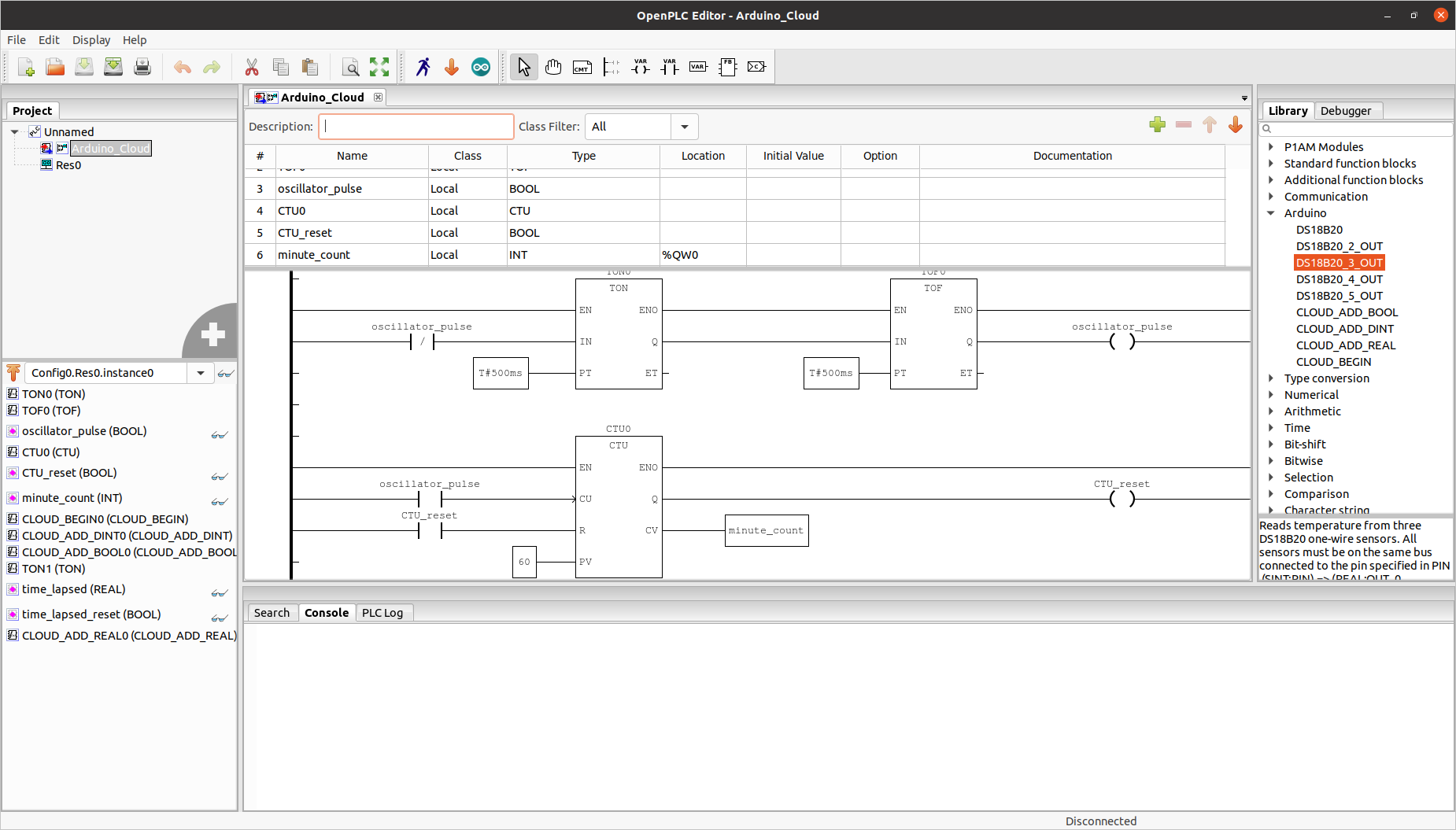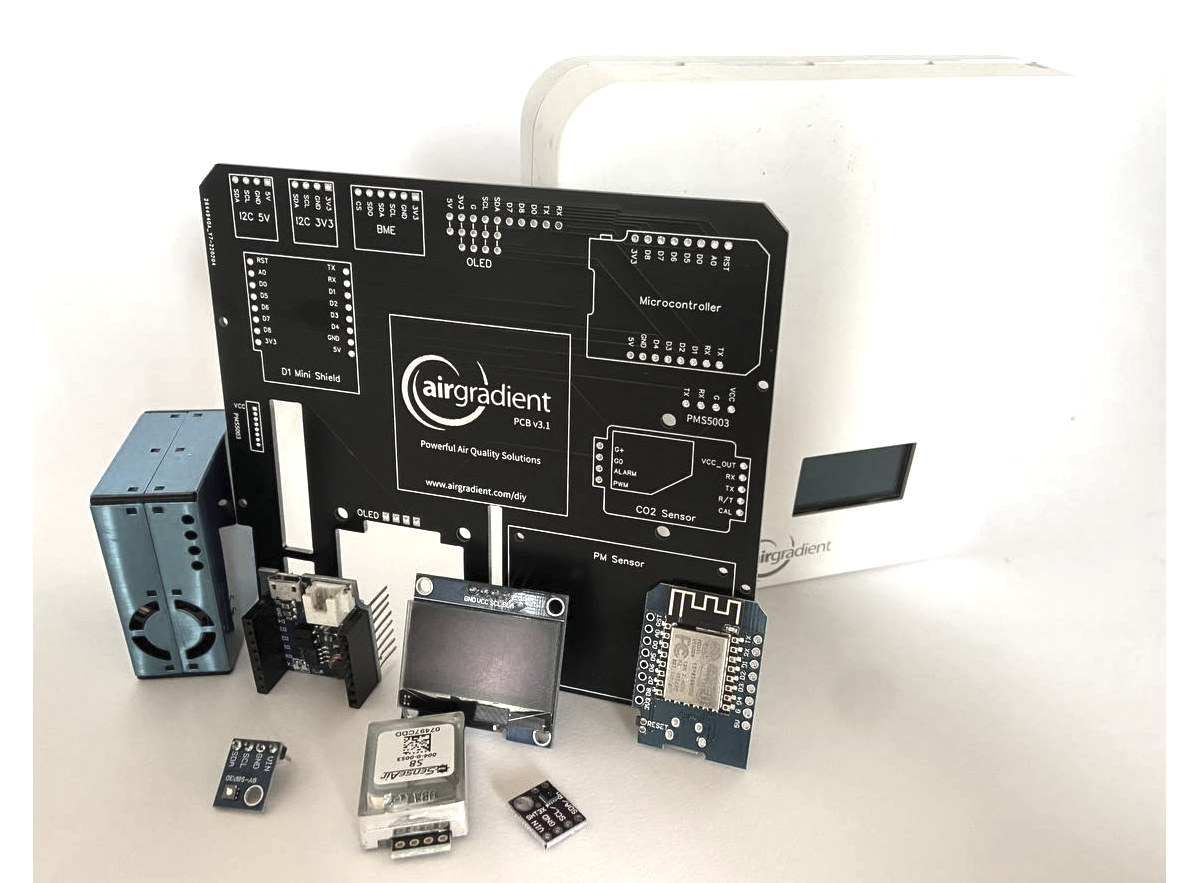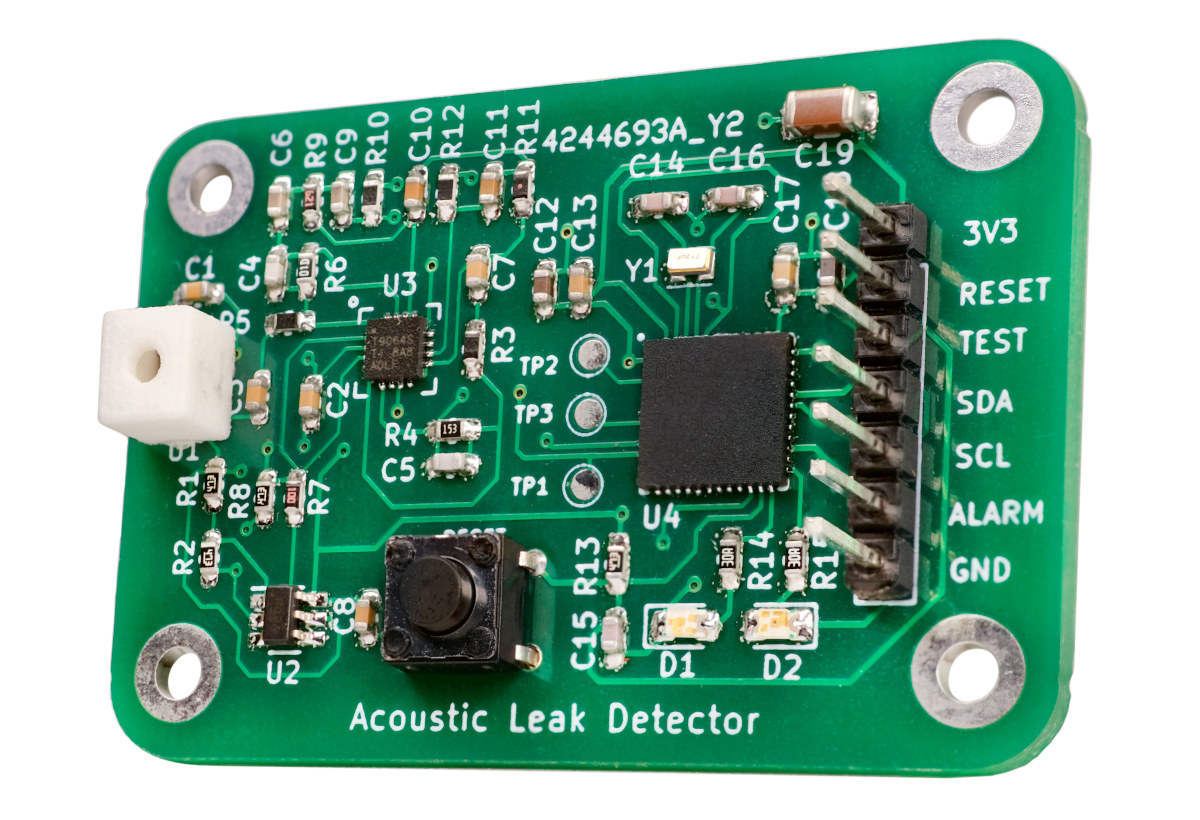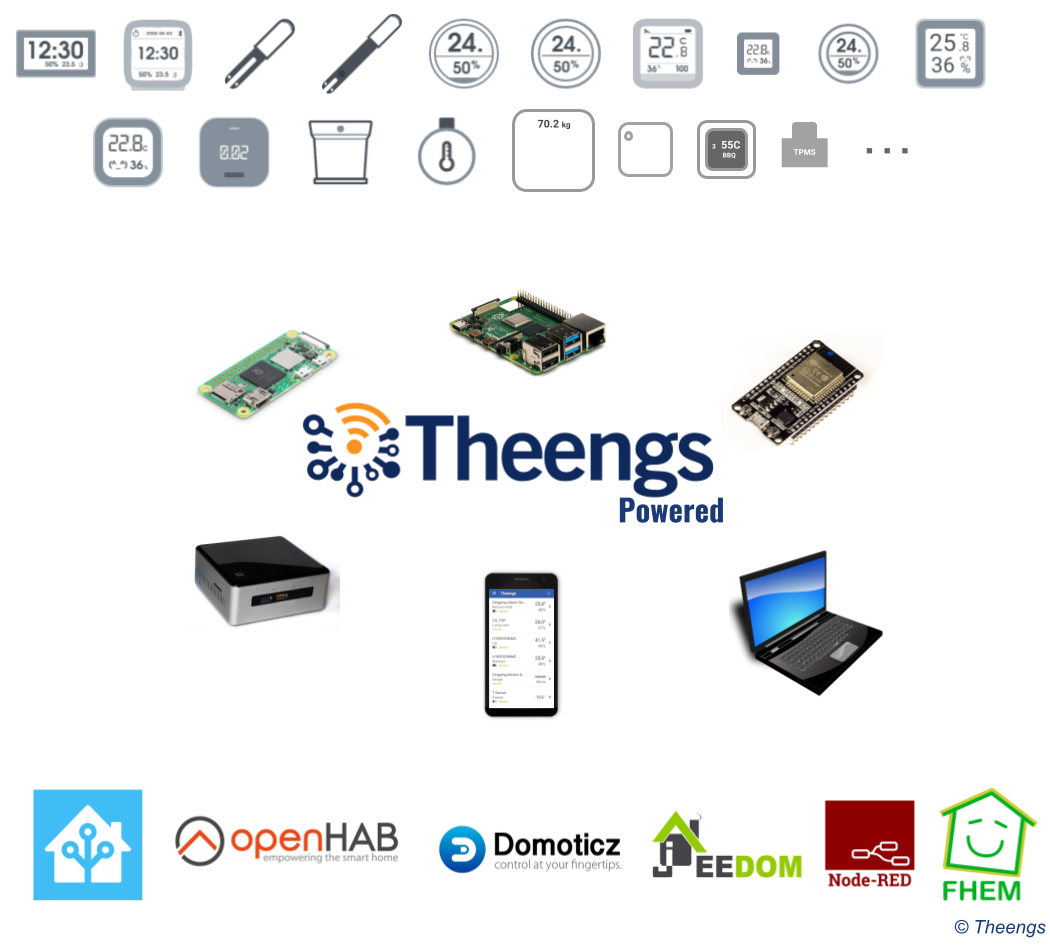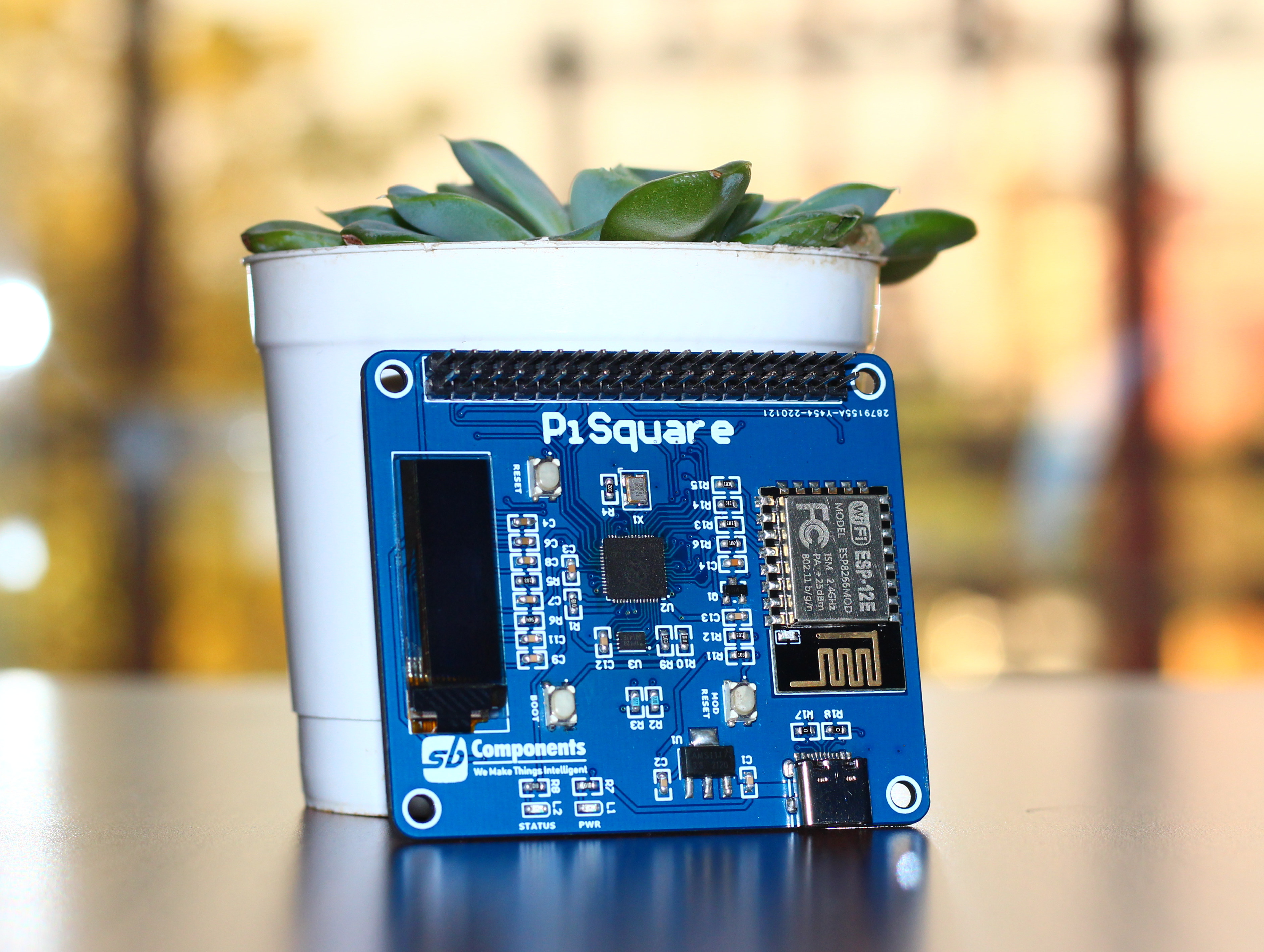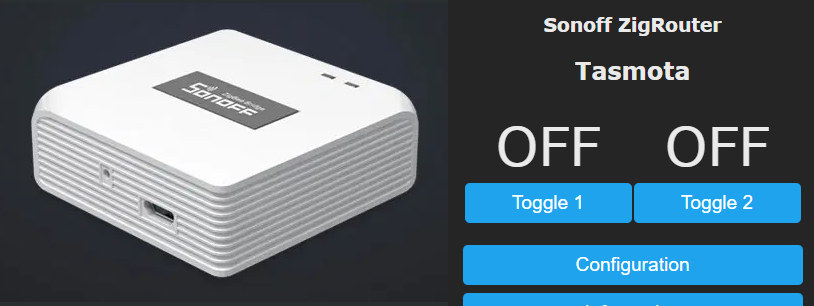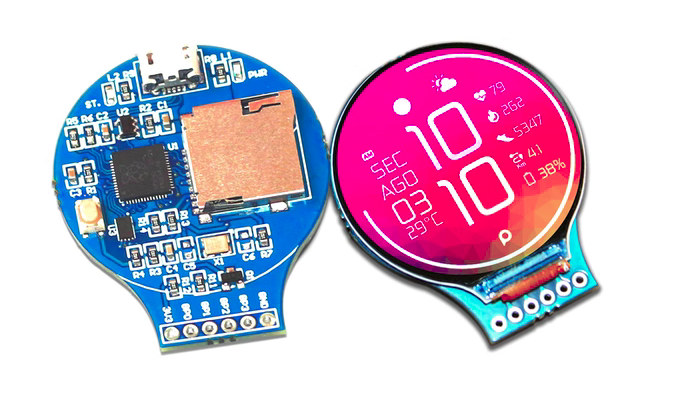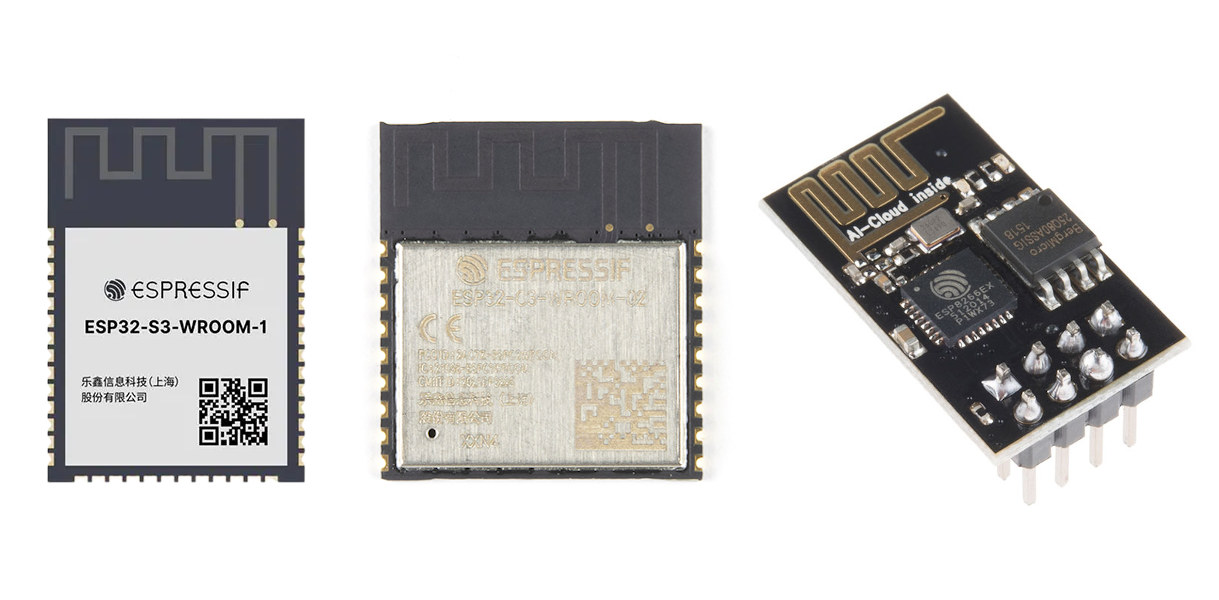OpenPLC is an open-source, free-to-use Programmable Logic Controller Suite, compliant with the IEC 61131-3 standard, and working with a range of hardware platforms such as Arduino, ESP8266/ESP32, Raspberry Pi SBCs, as well as Windows and Linux machines. When Arduino unveiled the Arduino PLC IDE, we noted the languages defined by the IEC 61131-3 standard were licensed, and the PLC key for the Portenta Machine Control unit sold for $17.60. One reader complained about the high license cost per device, but Massimo Banzi, the co-founder of the Arduino project, replied it was cost-effective for smaller deployments: Actually it’s not that much money compared to the cost of other PLC software (thousands of dollars per seat!). This model helps small companies with not that many devices.. It’s possible to negotiate bulk licenses for companies. But there’s also another option with OpenPLC open-source PLC suite that does not require any license fee. That’s […]
DIY air quality monitor is based on Wemos D1 mini ESP8266 board, Sensirion SGP41 TVOC sensor
Open AirGradient is a DIY air quality monitor based on the Wemos D1 mini ESP8266 WiFi IoT board programmed with Arduino and fitted with a range of sensors including an optional Sensirion SGP41 TVOC sensor through a custom PCB designed with EasyEDA. Two versions of Open AirGradient are available. The Basic model includes an OLED display, a Plantower PMS5003 PM sensor, a Senseair S8 CO2 sensor, and SHT30 or SHT31 temperature & humidity sensor, while the Pro version adds a larger display, a plastic enclosure, and support for the SGP41 TVOC sensor. Open AirGradient key components: MCU board Basic – Wemos D1 Mini Pro Pro – Lolin D1 Mini v4 with USB-C port Display Basic – Wemos OLED shield Pro – 1.3-inch OLED display Sensors Plantower PMS5003 PM sensor Senseair S8 CO2 sensor SHT30 or SHT31 temperature and humidity sensor module Optional Sensirion SGP41 TVOC & NOx sensor (Pro version […]
AquaPing is an open-source, battery powered acoustic water leak detector module (Crowdfunding)
The AquaPing is an open-source hardware, ultra-low power acoustic water leak detector sensor based on Texas Instruments MSP430 microcontroller and a microphone that can detect leaks without having to do any plumbing, instead capturing audio for water leak detection, and it even works for leaks behind walls. All signal processing and analysis occur on the MSP430 MCU, so no audio is streamed to the cloud and eavesdropping is impossible, plus the sensor only captures high frequencies out of the range of normal conversations, so eavesdropping is not feasible, plus those higher frequencies are also said to provide highest sensitivity and reliability. AquaPing specifications: MCU – Texas Instruments MSP430FR5994 microcontroller to perform FFT spectral analysis (10x faster/efficient than ARM-Cortex M0+) Audio capture – MEMS microphone covered by a small rectangular plastic structure to form a Helmholtz resonator. Minimum detectable leak rate – 0.01 gpm (gallon per minute) depending on stand-off distance […]
Theengs open-source tools to decode BLE sensors work on ESP32, Raspberry Pi, Android phone, etc…
Theengs is a manufacturer agnostic open-source set of tools to decode BLE sensors and integrate those into smart home and IoT solutions such as Home Assistant with notably support for autodiscovery to automatically create the sensor. Theengs can be installed on various hardware from ESP32 to an Android phone or a Raspberry Pi SBC, and the solution currently supports close to forty BLE sensors from various companies including Xiaomi, Honeywell, and RuuviTag. There are six components: The Theengs Decoder library developed in C++ for portability and translating data from sensors into human-readable data using the JSON format. The Python-based Theengs Gateway acting as a BLE to MQTT bridge for Home Assistant, OpenHAB, and NodeRED integration. It relies on the Theengs Decoder library and publishes the sensors broadcasted BLE information to an MQTT broker. The OpenMQTTGateway is also BLE to MQTT bridge, but instead of targetting Linux-capable hardware like Raspberry […]
PiSquare enables wireless Raspberry Pi HAT control though ESP8266 and RP2040 MCUs (Crowdfunding)
SB Components PiSquare is a board following the Raspberry Pi HAT form factor, and based on Raspberry Pi RP2040 microcontroller & ESP-12E Wireless module in order to control multiple Raspberry Pi HATs wirelessly without stacking them on their Raspberry Pi. The PiSquare uses Socket programming to control multiple Raspberry Pi HATs wirelessly, and for instance, you could connect multiple HATs with SPI or UART without the expansion boards conflicting with each other since the physical interface is handled by the Raspberry Pi RP2040 on each PiSquare connected over WiFi (ESP8266) to the Raspberry Pi SBC. PiSquare hardware specifications: MCU – Raspberry Pi RP2040 dual-core Cortex-M0+ microcontroller @ up to 133 MHz Storage – 16Mbit SPI flash Display – 0.91-inch OLED display Connectivity – 802.11b/g/n WiFi 4 via ESP-12 (ESP8266) module USB – 1x USB Type-C port 40-pin header and form factor compatible with the official Raspberry Pi HATs Power Supply […]
Sonoff ZBBridge gateway can be used as a Zigbee router/repeater
Sonoff ZBBridge WiFi to Zigbee gateway was introduced in April 2020, and a few months later got support for Tasmota ESP8266 firmware and Gecko firmware for either Home Assistant or Zigbee2MQTT support. But there’s now a new Tasmota firmware that converts Sonoff ZBBridge into a Zigbee router (a.k.a. Zigbee Signal Repeater or Zigbee Range Expender) following a request on Tastoma Github’s issue tracker from last year. The firmware, unofficial yet signed, was released a few days ago by xsp1989 Github’s user with a link to the firmware on Google Drive. Digiblur successfully tried it out on its own Sonoff Zigbee bridge and published the instructions. Assuming you already have Tasmota flashed to the device, switching to the router software is basically a firmware upgrade from the Tasmota web interface. Once the update is complete, you’ll still need to access the console in Tasmota in order to run a command to […]
Round color LCD board comes in Raspberry Pi RP2040 or ESP8266 flavor (Crowdfunding)
Roundy is a board with a 1.28-inch round color LCD with 240 x 240 resolution that is offered with either a Raspberry Pi RP2040 MCU or an ESP-12E WiFi module, with the variants respectively called RoundyPi and RoundyFi. Both boards come with a micro USB port for power and programming, a button for flashing the firmware, and six pins with power signals and four GPIOs. One difference is that the Raspberry Pi RP2040 board includes a MicroSD card for data storage. Roundy specifications: MCU / module RoundyPi – Raspberry Pi RP2040 dual-core Cortex-M0+ microcontroller @ up to 133 MHz with 256KB SRAM RoundyFi – ESP-12E module with ESP8266 microcontroller @ up to 160 MHz with 160KB SRAM, 4MB SPI flash External storage (RoundyPi only) – MicroSD card socket Display – 1.28-inch round LCD with 240 x 240 resolution, 65k colors; GC9A01 SPI display driver. (It appears to be that model) […]
A comparison of ESP32-S3, ESP32-C3 and ESP8266 modules
The ESP32-S3 chip is equipped with an Xtensa 32-bit LX7 dual-core processor clocked at up to 240 MHz, supports 2.4 GHz Wi-Fi and Bluetooth 5 LE, and boasts AI instructions, as well as a reliable security encryption engine, specially built for the AIoT market. Modules based on the ESP32-S3 processor bring many benefits to designers with support for Bluetooth Long Range mode, plenty of resources with 512 KB SRAM (TCM), 45 programmable GPIO pins, and rich communication interfaces. They can also handle high-speed Octal SPI flash with higher capacities, as well as off-chip PSRAM. So, what are the differences between the new ESP32-S3 modules, and typical ESP32-C3 and ESP8266 modules? Let’s find out. Jean-Luc Aufranc (CNXSoft)Jean-Luc started CNX Software in 2010 as a part-time endeavor, before quitting his job as a software engineering manager, and starting to write daily news, and reviews full time later in 2011. www.cnx-software.com


